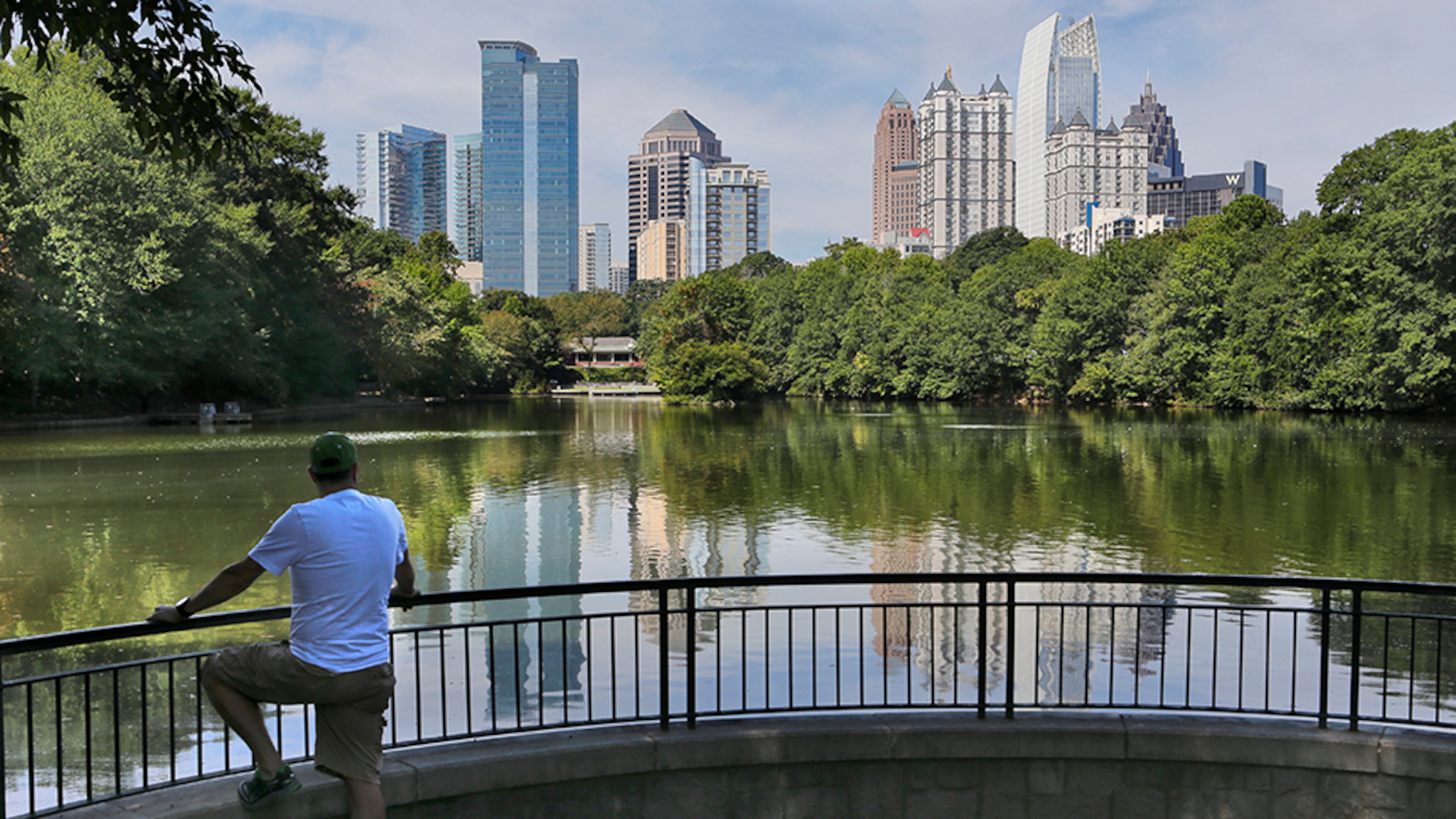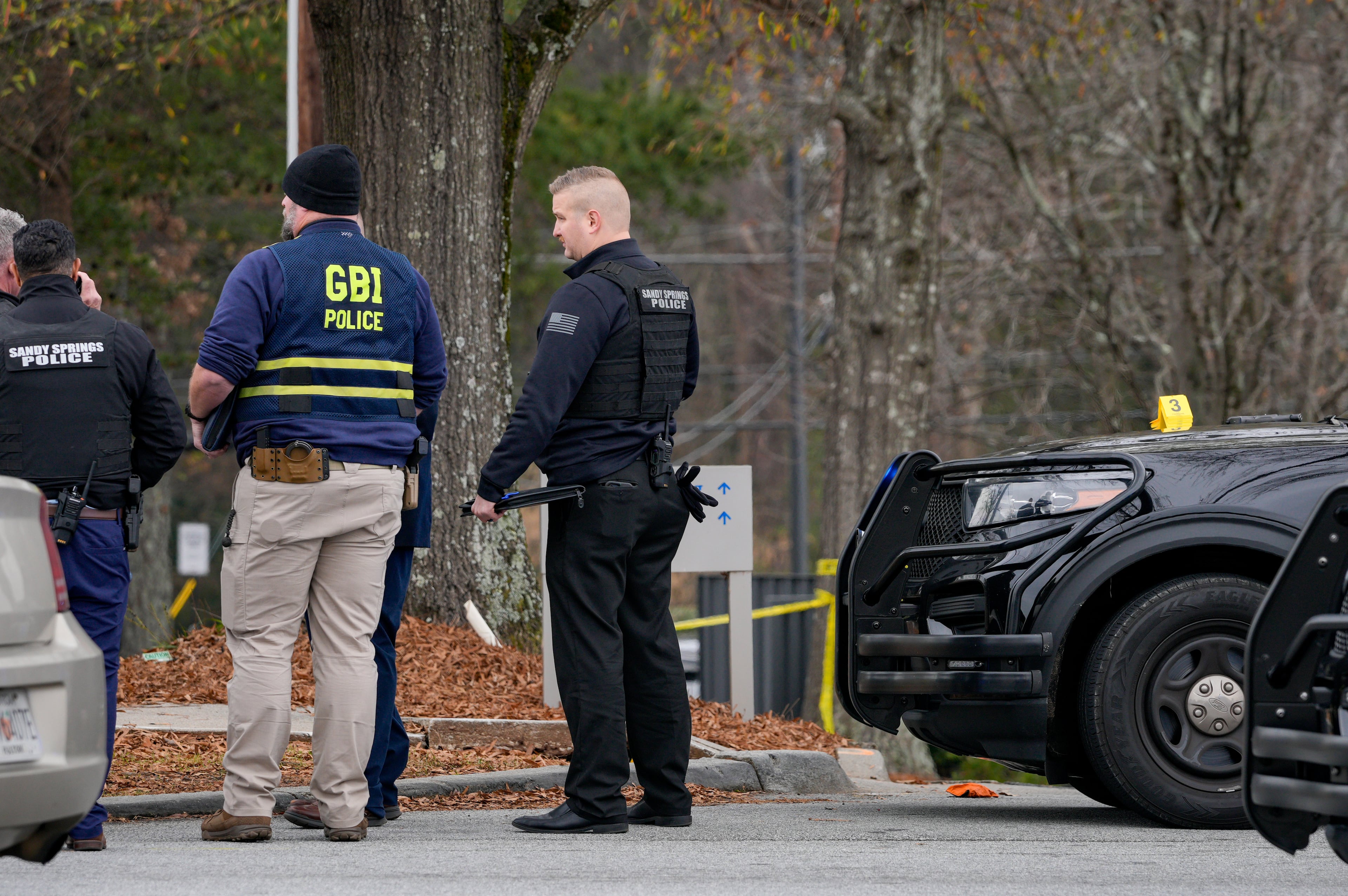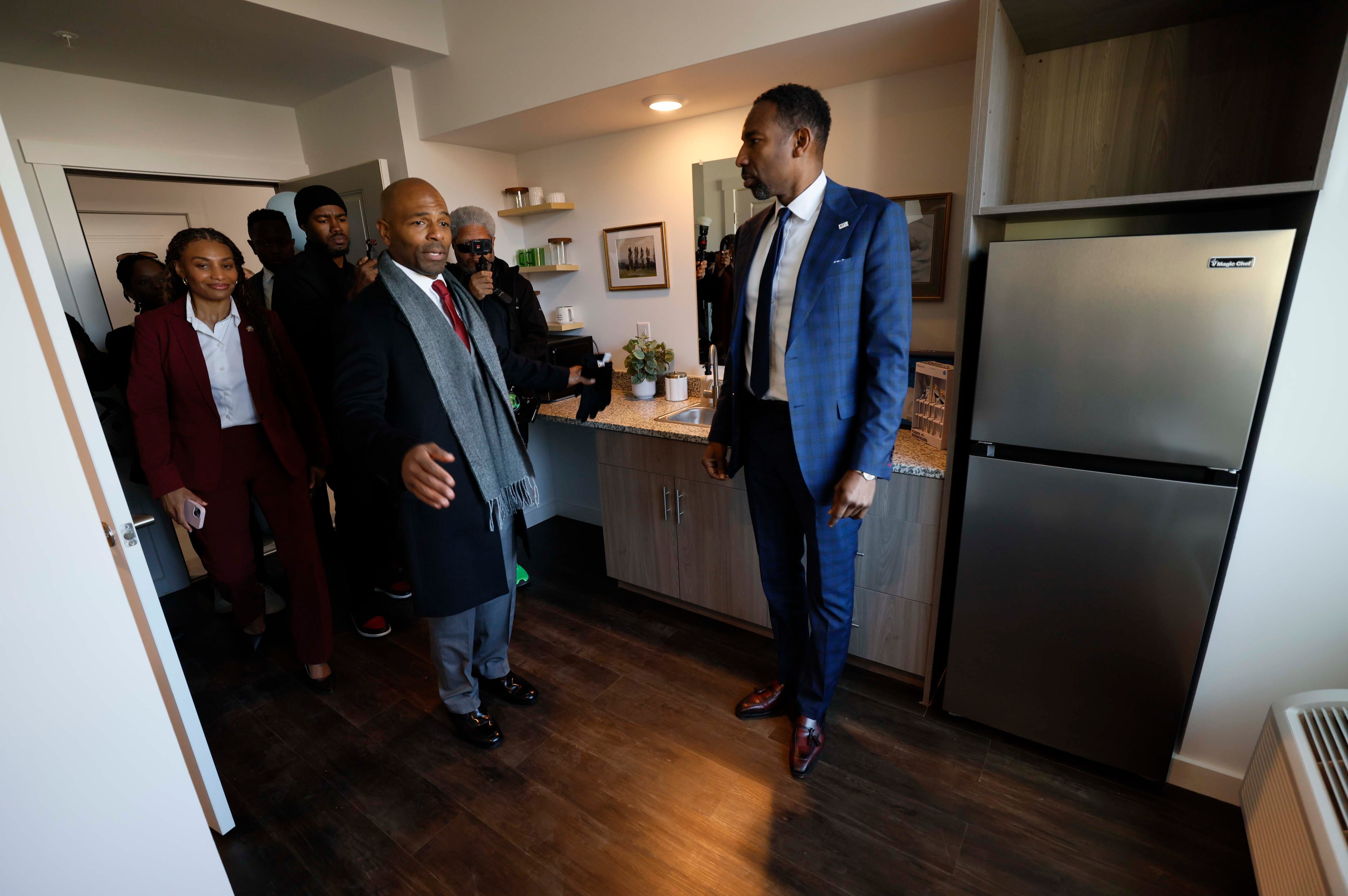Atlanta finally has new tree protection rules. Some say it’s not enough.

After years of hiccups, Atlanta City Council voted Monday to increase tree removal fees and codify other changes to the city’s tree ordinance, in what council members said were the most significant changes to the legislation in its 25-year existence.
The updated rules for tree protection and removals were approved unanimously. Still, several council members said they believe more needs to be done to protect trees in the “city in the forest” and pledged to push for additional legislation.
Council member Michael Julian Bond was among those who expressed misgivings about the legislation, but voted for the revised ordinance Monday. Before the vote, Bond sought to reassure environmentalists that this was not the end of the push to protect trees, calling the legislation a “tapestry” to which more tree protections will be added.
“We know that people did not get everything they wanted out of this iteration of the ordinance, but I also want to make clear that the movement to improve tree protections is not over because this passes,” Bond said.
Atlanta Mayor Andre Dickens, who had thrown his support behind the legislation, praised the City Council and the Department of City Planning for their work on the ordinance.
“As a multi-generational Atlanta native, I am proud of our beautiful city in the forest,” Dickens said in a statement. “Atlanta has always been a national leader in tree canopy and we have taken measures to protect it for future generations.”
Builders and real estate groups framed the new ordinance as a compromise.
Michael Paris, CEO of the Council for Quality Growth, spoke in support of the legislation at the City Council meeting Monday, arguing “everyone still has items on the table.”
“That’s what a balance is going to look like,” he added.
But tree advocates were sorely disappointed, arguing the updates fell far short of what’s needed to stop Atlanta’s tree canopy from shrinking further.
“It again enables developers to clear-cut,” said Chet Tisdale, an environmental lawyer and member of Atlanta’s tree commission.
The changes, including increased tree removal costs, will take effect Jan. 1 next year.
‘Not doing enough’
The legislation approved Monday closely resembles a version that passed out of the council’s Community Development and Human Services Committee last week. The committee advanced the legislation, despite concerns raised by some members who said the ordinance did not do enough to protect trees — and that the public was given little time to digest the complex legislation.
The new ordinance reached the finish line after earlier efforts over more than a decade failed to gain enough support from City Council, in the face of festering disagreements between developers and environmentalists.
As the years have passed, research has shown Atlanta’s canopy — one of the most significant urban forests left in any city in the country — is shrinking.
Atlanta has adopted a goal of maintaining 50% canopy coverage, but the city’s tree cover has been well short of that for years. Georgia Tech researchers’ most recent analysis of the canopy released in 2018 found the city’s tree coverage stood at 46.5%, down 1.5% from a decade earlier. A new assessment is expected to be released soon and many tree advocates say they expect it will show canopy coverage has dipped below 45%.
At the same time, the city is facing more extreme heat fueled by human-caused climate change. Studies have found trees are among the most cost-effective ways to keep the city cool.
One of the biggest changes the new ordinance makes is to raise Atlanta’s tree removal fee to $140 per diameter inch of tree trunk. Starting Jan. 1, 2027, recompense — the fee paid to the city to remove a tree —will also be adjusted each year to the reflect the annual rate of inflation for metro Atlanta, as published by the Bureau of Labor Statistics.
It’s a change tree advocates, City Hall and some developers have said was badly needed for years. The current formula requires Atlantans pay $100, plus another $30 for each diameter inch of tree cut down — too little to pay for tree replacement, the city has said.
But the ordinance caps tree removal fees, placing a ceiling on the amount a developer would pay for clearing a lot, regardless of how many trees are removed. The new per-acre caps limit developer fees to between $12,500 to $35,000, depending on zoning. Only new subdivisions, new lots of record and vacant lots are eligible to have their fees capped - and only if they preserve a specific percentage of the site’s existing trees.
Those caps were reinserted into recent versions, after their omission from earlier drafts led to outcry from builders. Tree advocates pushed against the caps, arguing they don’t do enough to discourage clear-cutting.
The ordinance also:
- Creates minimum tree density requirements for plantings on single-family lots
- Increases the maximum penalty for illegal tree removals from $60,000 to $200,000 per acre for cases where the arborist cannot determine how many trees were cut down. For cases where a single tree has been removed, the fines are $500 for the first infraction and $1,000 for each subsequent violation, plus payment calculated to replace the tree.
- Offers reduced recompense fees for affordable housing units
- Allows $400,000 from the city’s Tree Trust Fund to be used to help low-income, senior citizen homeowners trim or remove hazardous trees
- Requires tree service companies operating in Atlanta to register with the city
Greg Levine, the executive director of the nonprofit Trees Atlanta, said the revisions were a step in the right direction, but are “just not doing enough” to protect trees.
Tree proponents pushed hard for the legislation to include a tree preservation standard that would have required developers of residential, commercial and multifamily properties to preserve a percentage of their lots to protect trees.
Earlier ordinance drafts included preservation standards for single family and multifamily properties. But those proposals disappeared from recent versions after pushback from builders, who claimed the requirements would stunt development and hamper the city’s progress toward its affordable housing goals.
Lately, the Department of City Planning has said the standards need to be tested alongside updates to Atlanta’s zoning code, which are also in development. Builders have taken a similar tack, calling for “beta testing” of other tree protections.
The department says testing is needed to ensure tree and zoning rules work in concert to allow developments to proceed without putting the city in legal jeopardy.
On Monday, Council member Liliana Bakhtiari was among the members who begrudgingly supported the new ordinance, but signaled plans to push for new tree protections.
“To my colleagues and everyone listening, I am not done,“ said.
Editor’s note: This story has been updated to clarify eligibility for the caps on recompense fees and the amount dedicated to helping low-income, senior citizen homeowners.
A note of disclosure
This coverage is supported by a partnership with Green South Foundation and Journalism Funding Partners. You can learn more and support our climate reporting by donating at AJC.com/donate/climate.



